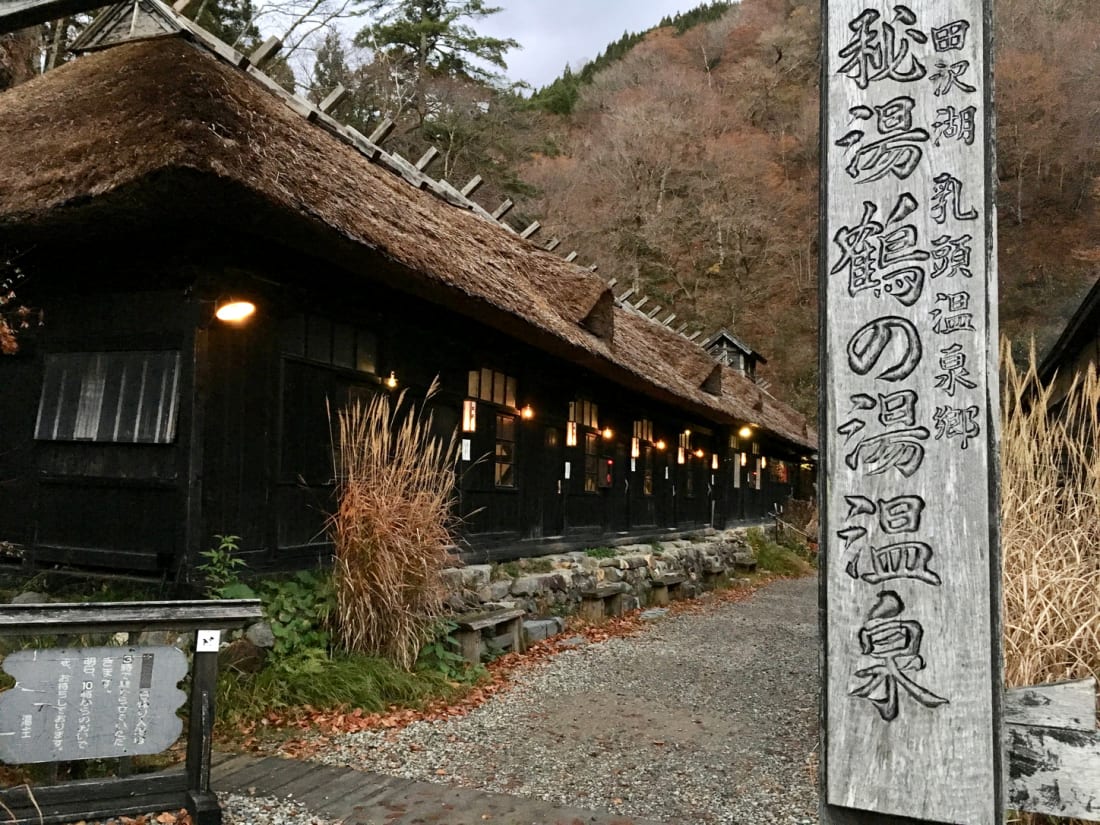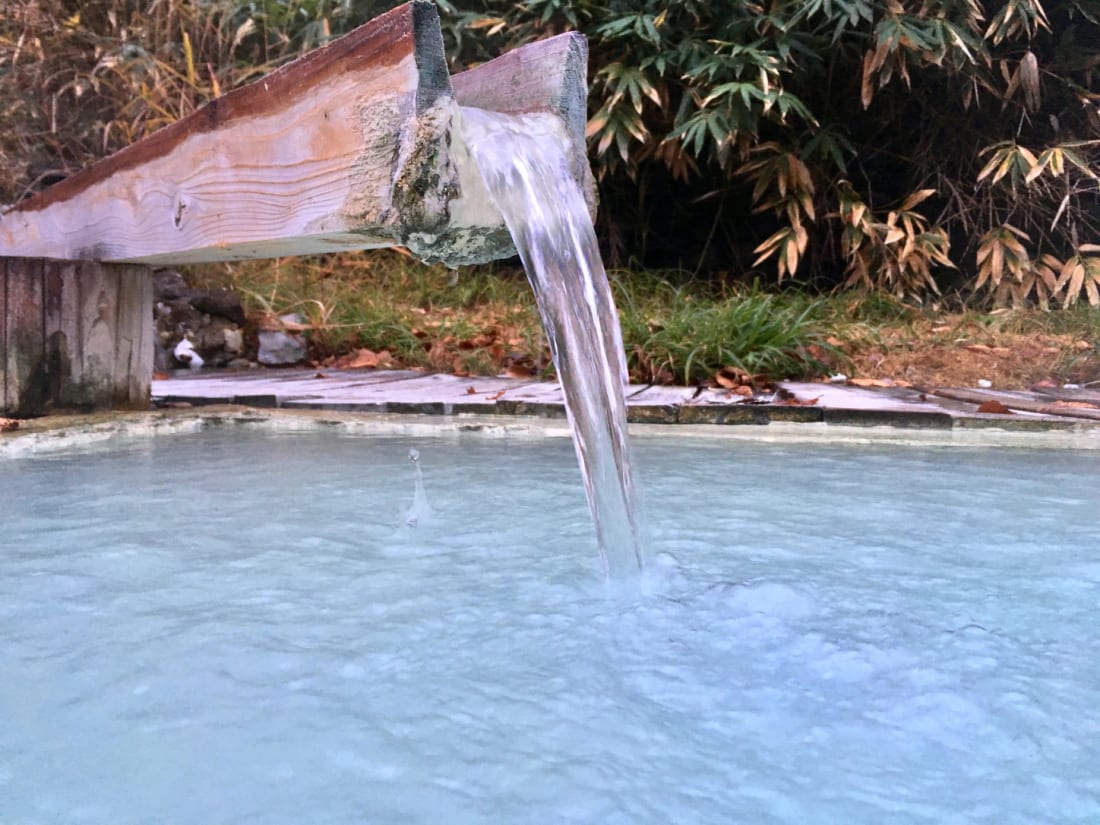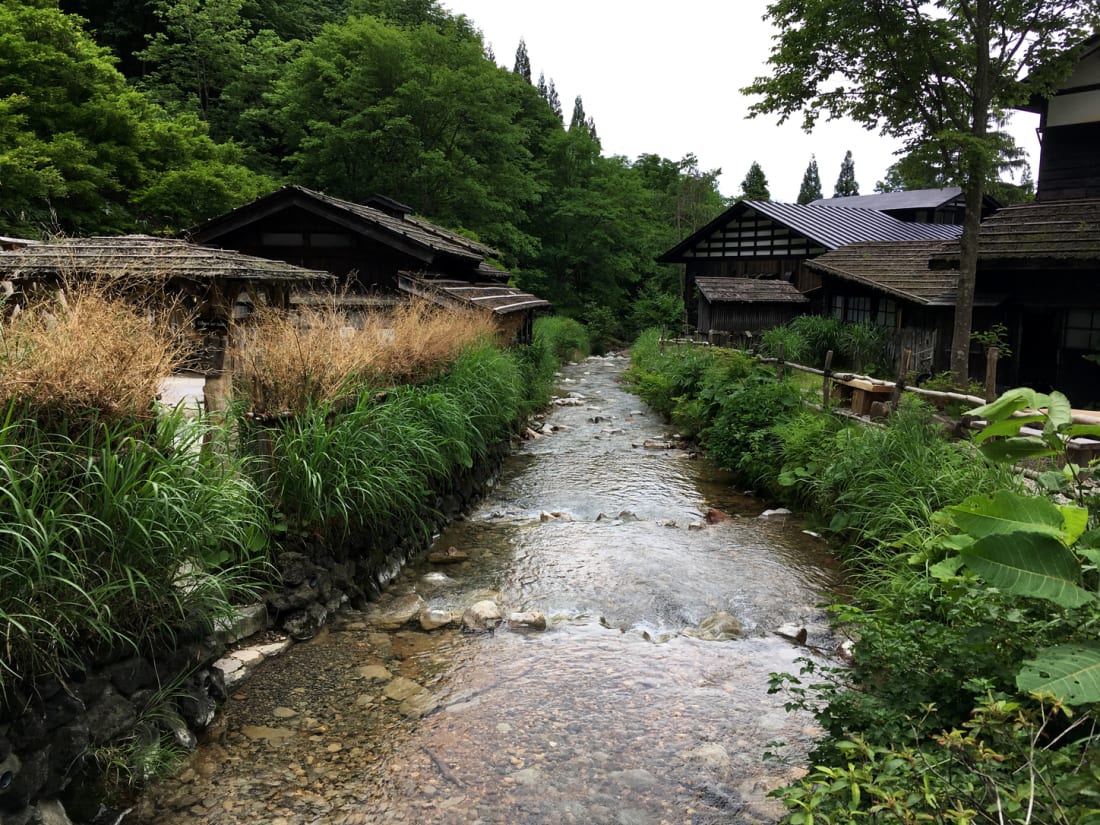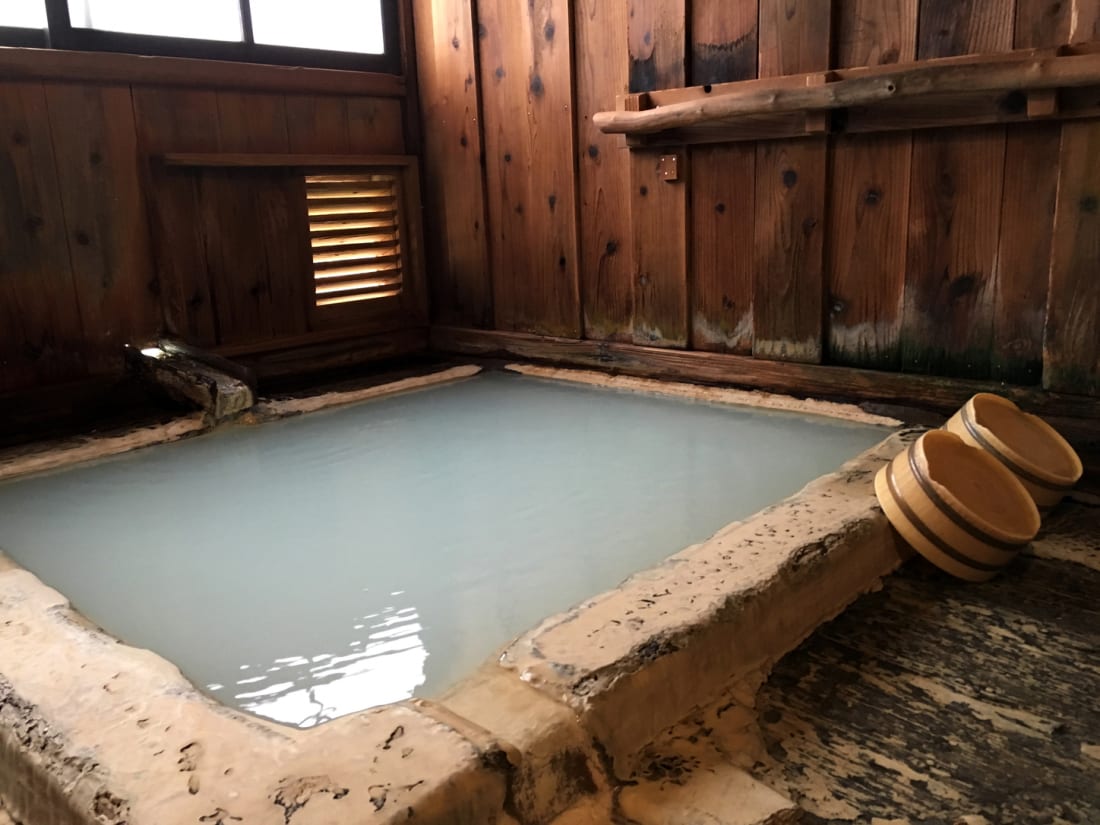As you go along the winding, meandering dirt road, a hint of sulphur begins wafting through your nose. Upon arrival, one finds no TV, no major electric appliances, no modern comfort at this hidden hot spa deep in the mountains of Akita Prefecture where wild animals like bears roam free. The phone says no signal.
Inside the buildings, the stairs are old and creaky. The doors are slightly crocked. Everything is rustic yet cozy, and comfortably warm.
Tsurunoyu Onsen, located in southern Akita Prefecture, is experientially a slip back into olden times, deprived of all conceivable modern life. Here, in the naturally ice-blue colored hot springs water, they also continue Japan’s tradition of open-air mixed bathing. Historically too isolated, too rural and exotic to be discovered by foreign tourists – that is precisely the reason more of them are arriving here as of late.
The number of Southeast Asian tourists in particular has been on the rise. “Thailand is the top country among the international tourists coming here,” says Kazushi Sato, the owner of Tsurunoyu Onsen. “The combination of the heavy snow and the hot spring might be quite rare for Thai people or people from other countries where it never snows.”
Malaysian tourist Shannon Menon, 35, a native of Johor Bahru, visited Tsurunoyu Onsen this past spring. He found that the snow-covered natural surroundings made him feel like he was vacationing in a “fairytale.”
Share the Same Baths as the Samurai
Among the attractions are the carefully preserved wooden buildings called honjin, a separate quarter within the onsen’s premise. Back in the Edo period around the 18th century, they accommodated upper class samurai who wanted to relieve the weariness from the long journey to Edo (present day Tokyo).
Known in Japanese as sankin-kotai, samurai across Japan were required to demonstrate allegiance to the Shogun in the nation’s capital by taking up residence in Edo in alternate years. The samurai made this trek on foot by forming a long procession with hundreds of carriers, soldiers, other attendants and the vassals of the Daimyo, the chief of the domain.
This means that the journey was extremely exhausting for the samurai from a remote domain like Akita, which is on the northwestern fringe of Japan’s main island of Honshu. The samurai recharged at Tsurunoyu Onsen on their way to and from Edo. In more modern times, it became the place for local farmers to relieve fatigue following the planting and harvesting seasons in spring and fall.
Soul-soothing Waters
The healing powers of the hot springs are still relevant today, or rather, even more so for urbanites in Tokyo and other big cities. The health benefits that derived from the magical pool of hot waters are numerous, such as relieving pain, stress, wounds, skin problems, high blood pressure, diabetes, arteriosclerosis and rheumatism.
“The water here is very unique,” says Saran Chaisawat, 34, who recently visited from Bangkok, Thailand. “My skin felt so soft after taking a bath here.”
There are four different hot spring pools within the premise, all within a 50-meter radius. Some contain soda and hydrogen sulphide, desirable for skin symptoms, while others contain sulphur, sodium, calcium and sodium bicarbonate, good for healing physical wounds. “I believe my wounds in the legs have been relieved,” Emilie Hagebø, 27, from Norway happily says, after relaxing in the hot spring for the first time.
The water is apparently good for drinking. According to Tsurunoyu, it works through your body to assist in curing diabetes, gout, constipation, rheumatism and liver disease.
The murky blue and whitish color may hold you back at first but nervously, one might take a sip. Nothing may happen immediately to your body – at least it tastes like a boiled egg.
Go With the Flow
Tsurunoyu is especially famous for the mixed bathing section – known as konyoku. “Konyoku is such a unique culture of Japan,” says Tadanori Matsuda, a balneology professor at Mongolian National University of Medical Sciences. “Mixed bathing is good for mental well-being as it makes people feel more mentally free.”
Konyoku, which was more pervasive in the past, has been curtailed by nearly half in recent decades, with experts saying somewhere between 600 to 700 remain in Japan. Some mixed baths are in danger mostly due to voyeurism and surreptitious activities by mischievous customers equipped with handy technology. In 2015, for example, a mixed bath establishment in Fudonoyu in Shiobara, Tochigi Prefecture shut down for a period of time due to bathers conducting secret filming, and even porn shooting.
By law, konyoku are no longer allowed to open in Japan. In 1948, an ordinance issued by the Ministry of Health, Labor and Welfare, declared: “do not let men and women aged over 10 years old bathe together.” However, it also says this can be exempted for facilities recognized as having “no problem in public hygiene and public morals.” The ministry turns over the responsibility for mixed bathing regulations to each local authority, but most prefectures including Akita stick to the ban except for historically existing establishments.
This means no new mixed bath may be launched, but the traditionally existing ones like Tsurunoyu are grandfathered in. As Mr. Sato put it, “they are turning a blind eye towards us.”
“I didn’t even feel like being naked”
Because of the structure of the outside baths, naughty events are less likely to happen at Tsurunoyu. The mixed baths here are open-air and visible for everyone. There are no barriers except some bushes that separate bathing areas from the possible roaming guests.
“Once you get into the water, you won’t be seen that much,” Mr Sato, the owner explains.
If you get into the water while hiding behind the rocks (in the women’s bath), the milky colored water will cover your whole body, effectively shielding from view. Putting towels into the bath can be considered an unsanitary act in Japan out of consideration for good water hygiene. But the basic etiquette dictates that a small towel can be used to cover your body as you slip into the water.
“I didn’t even feel like being naked in my mind,” a 77-year-old man from the Netherlands says, after soaking in the mixed bath. In case you are still shy, there are three separated baths for men and four women-only sections available.
After many rounds of soaking in the ice-blue water bubbling up from the ground, it’s time to say goodbye to the 300-year-old hot spring inn. Getting back in the vehicle and driving down the unpaved road, it feels like going back to the real world you left behind. As the car moves away from the onsen, the phone starts reconnecting to the internet.
Feature photo by Narongsak Nagadhana | Shutterstock
Please check local restrictions and requirements if you are planning to travel, and follow all health and safety guidelines to prevent the spread of COVID-19
Updated On December 26, 2022













